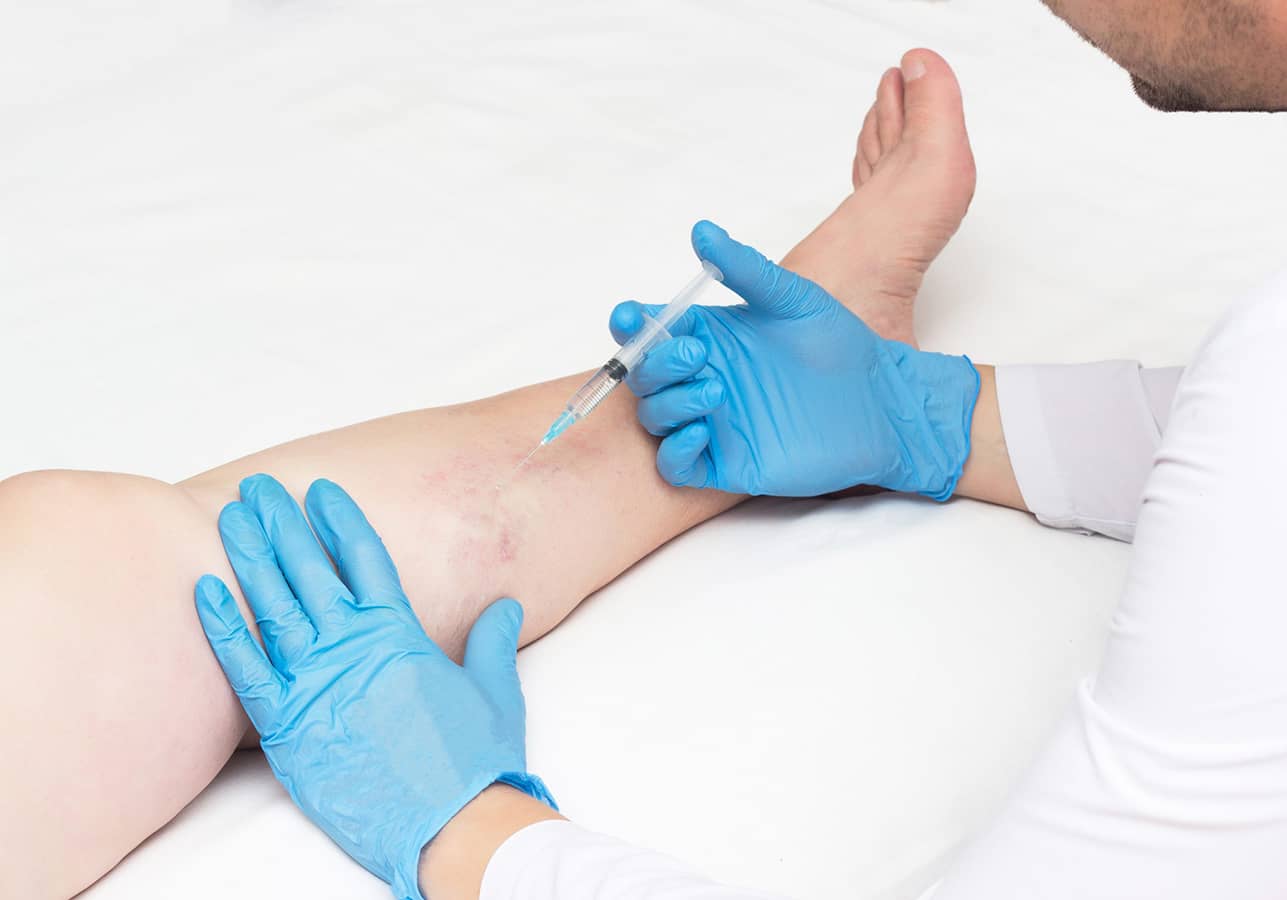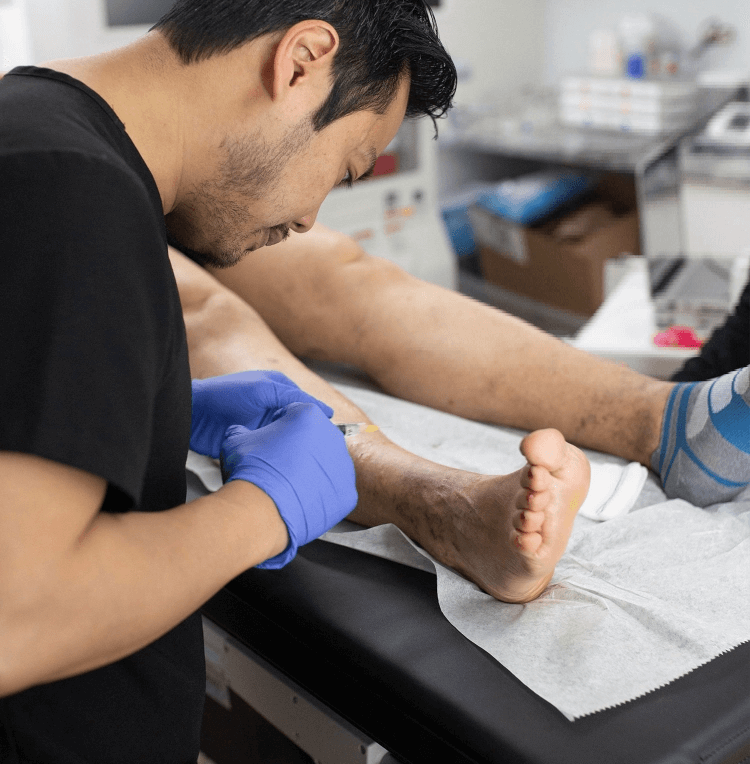What are the Treatment Options for Varicose Veins?
Varicose veins are a common condition that affects millions of people worldwide. They occur when veins become enlarged, dilated, and overfilled with blood. Often appearing blue or dark purple, varicose veins can be unsightly and uncomfortable. Fortunately, various treatment options are available to manage and eliminate varicose veins, ensuring better vascular health and enhanced appearance.
Understanding Varicose Veins
Before diving into the treatment options, it's important to understand what varicose veins are and why they occur. Varicose veins develop when the valves in the veins that help regulate blood flow stop functioning properly. This malfunction causes blood to pool in the veins, leading to their enlargement and discoloration. Factors such as genetics, age, pregnancy, obesity, and prolonged standing or sitting can contribute to the development of varicose veins.

Lifestyle Changes and Self-Care
One of the first steps in managing varicose veins involves making certain lifestyle changes and adopting self-care measures. These approaches can help alleviate symptoms and prevent the condition from worsening:
- Exercise Regularly: Engaging in physical activity, such as walking, swimming, or cycling, helps improve blood circulation in the legs, reducing the pressure on the veins.
- Maintain a Healthy Weight: Excess weight can put additional pressure on the veins, so maintaining a healthy weight through diet and exercise is crucial.
- Elevate Your Legs: Elevating the legs above the heart level several times a day can help reduce swelling and improve blood flow.
- Avoid Prolonged Sitting or Standing: Changing positions frequently and taking short walks can prevent blood from pooling in the veins.
- Wear Compression Stockings: These specially designed stockings provide gentle pressure to the legs, helping veins move blood more efficiently.
Medical Treatments for Varicose Veins
When lifestyle changes and self-care measures are insufficient, several medical treatments can address varicose veins effectively. Each treatment option has its advantages and may be recommended based on the severity of the condition.

Sclerotherapy
- Procedure: Sclerotherapy involves injecting a solution directly into the varicose veins, causing them to scar and collapse. This process forces blood to reroute through healthier veins.
- Advantages: It is a minimally invasive procedure with no need for anesthesia. It effectively treats smaller varicose veins and spider veins.
- Recovery: Patients can return to normal activities quickly, usually within a day. Multiple sessions may be required for optimal results.
Endovenous Laser Ablation (EVLA)
- Procedure: EVLA uses laser energy to heat and seal the affected veins. A small laser fiber is inserted into the vein through a catheter, delivering targeted heat.
- Advantages: This minimally invasive treatment is highly effective for larger varicose veins. It has a high success rate and minimal scarring.
- Recovery: Patients can resume normal activities within a few days. Mild discomfort and bruising may occur but typically subside quickly.
Radiofrequency Ablation (RFA)
- Procedure: RFA involves using radiofrequency energy to heat and close off varicose veins. A catheter is inserted into the vein, and the heat is applied to seal it.
- Advantages: Similar to EVLA, RFA is minimally invasive and suitable for larger veins. It provides excellent cosmetic results with minimal downtime.
- Recovery: Patients generally experience a quick recovery, with most returning to regular activities within a few days.
Ambulatory Phlebectomy
- Procedure: In this surgical procedure, tiny incisions are made along the leg to remove varicose veins. A special hook is used to extract the veins through the incisions.
- Advantages: It is highly effective for removing surface varicose veins and provides immediate relief from symptoms.
- Recovery: Recovery time is relatively short, with most patients resuming normal activities within a week. Scarring is minimal due to the small incisions.
Vein Stripping and Ligation
- Procedure: This surgical approach involves tying off and removing the affected veins through small incisions. It is typically used for severe cases.
- Advantages: It provides long-term relief from symptoms and can prevent recurrence of varicose veins.
- Recovery: Recovery may take longer compared to less invasive treatments, with a typical downtime of a few weeks.
Foam Sclerotherapy
- Procedure: A foam solution is injected into the varicose veins, causing them to close and eventually disappear. The foam is more effective for larger veins compared to traditional sclerotherapy.
- Advantages: It is minimally invasive and effective for treating larger varicose veins. It also has a quick recovery time.
- Recovery: Most patients can return to their daily activities within a day or two. Multiple treatments may be necessary for complete resolution.
Transilluminated Powered Phlebectomy (TIPP)
- Procedure: TIPP uses a light source and suction device to remove varicose veins. A small incision is made, and the veins are extracted using the specialized device.
- Advantages: It allows for precise removal of varicose veins with minimal damage to surrounding tissues.
- Recovery: Patients typically experience a quick recovery, with most returning to normal activities within a few days.
What is a Vein Doctor Called?
Understanding the role of a vein specialist is crucial when seeking treatment for varicose veins. So, what is a vein doctor called? The medical professionals who diagnose and treat venous conditions are known as phlebologists. These specialists have extensive training in managing disorders of the veins and ensuring optimal vascular health.
Who is a Phlebologist?
A phlebologist is a physician with specialized training in the diagnosis and treatment of venous diseases, including varicose veins, spider veins, and chronic venous insufficiency. They often have backgrounds in dermatology, general surgery, vascular surgery, or internal medicine before specializing in phlebology.
Training and Certification
To become a phlebologist, a doctor must complete medical school and residency training in a related specialty. Additional fellowship training or specialized courses in venous diseases and treatments are required. Certification by the American Board of Venous & Lymphatic Medicine (ABVLM) or similar accrediting bodies signifies that a physician has met rigorous standards in the field of phlebology.
What Can a Phlebologist Do for You?
Phlebologists offer a wide range of services to diagnose and treat venous conditions. Some of the key roles and procedures they perform include:
Diagnosis of Venous Disorders
- Ultrasound Imaging: Using ultrasound technology, phlebologists can visualize the veins and assess blood flow, helping to identify issues like varicose veins, deep vein thrombosis, and venous insufficiency.
- Physical Examination: A thorough physical examination helps phlebologists evaluate symptoms and plan appropriate treatment.
Treatment of Varicose Veins and Spider Veins
- Sclerotherapy: As discussed earlier, sclerotherapy involves injecting a solution into the veins to cause them to collapse and fade away.
- Endovenous Laser Therapy (EVLT): This minimally invasive procedure uses laser energy to close off affected veins.
- Radiofrequency Ablation (RFA): Similar to EVLT, RFA uses radiofrequency energy to heat and seal varicose veins.
- Ambulatory Phlebectomy: A surgical procedure to remove surface varicose veins through small incisions.
Management of Chronic Venous Insufficiency
- Compression Therapy: Phlebologists often recommend compression stockings or bandages to improve blood flow and reduce symptoms.
- Medication: In some cases, medications may be prescribed to manage pain, inflammation, or blood clotting issues.
Prevention and Education
- Lifestyle Counseling: Phlebologists provide advice on lifestyle changes to prevent the progression of venous diseases, including exercise, weight management, and proper leg elevation techniques.
- Patient Education: Educating patients about their condition and treatment options is a crucial part of a phlebologist's role. This ensures patients are well-informed and active participants in their care.
Conclusion
Varicose veins can be more than just a cosmetic concern; they can lead to discomfort and more serious health issues if left untreated. Understanding the available What are the Treatment Options for Varicose Veins and seeking care from a qualified vein specialist, or phlebologist, is essential for effective management of this condition. From lifestyle changes and self-care measures to advanced medical treatments like sclerotherapy, EVLA, and RFA, there are numerous ways to address varicose veins and improve vascular health.
Remember, the first step towards healthier veins is consulting a knowledgeable and experienced phlebologist who can guide you through the best treatment options tailored to your needs. Whether it's minimally invasive procedures or surgical interventions, a vein specialist can provide the care and expertise necessary to restore your veins to optimal health.
Comments
Post a Comment